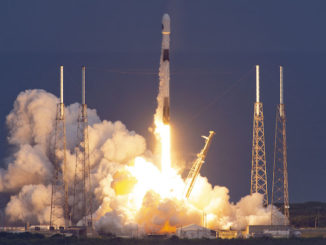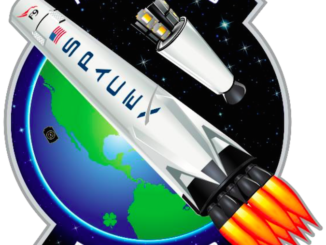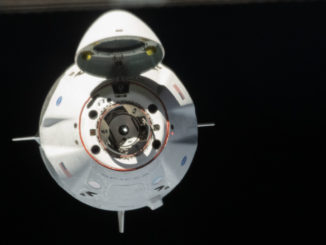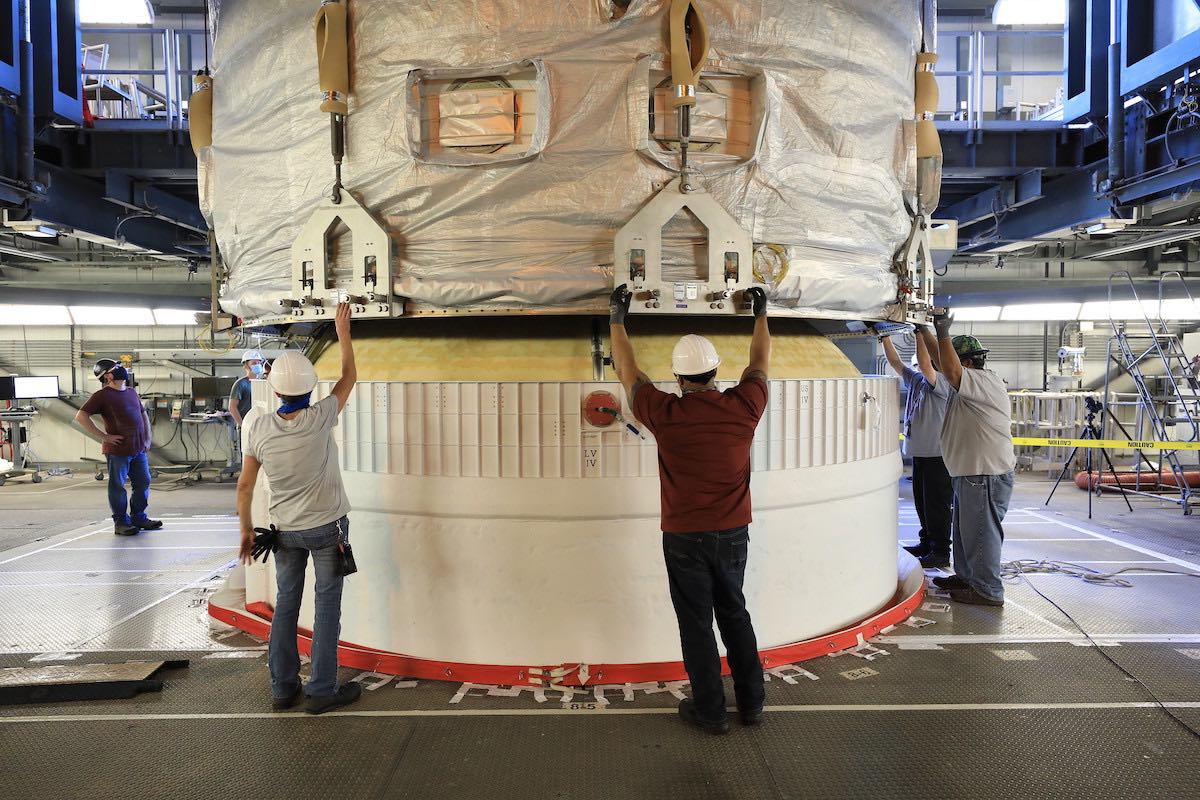
The flight of a United Launch Alliance Delta 4-Heavy rocket set for Aug. 26 from Cape Canaveral continues the Delta rocket family’s countdown to retirement. With five Delta 4-Heavy missions left to launch, ULA’s chief executive Tory Bruno says there are no plans to build more as the company transitions to the next-generation Vulcan Centaur rocket.
The next Delta 4-Heavy launch is scheduled to blast off Aug. 26 from pad 37 at Cape Canaveral Air Force Station. ULA says the mission has a launch period opening at 1:50 a.m. EDT (0550 GMT) and closing at 6:25 a.m. EDT (1025 GMT), but the actual launch window lies within that period.
ULA’s heavy-lifter will carry a classified payload into orbit for the National Reconnaissance Office, which owns the U.S. government’s fleet of spy satellites. The mission, codenamed NROL-44, will mark the 12th flight of ULA’s most powerful rocket since its debut in 2004.
Seven of the previous 11 Delta 4-Heavy missions have carried NRO payloads into orbit. Others launched NASA’s Orion capsule on an unpiloted orbital test flight and NASA’s Parker Solar Probe on a scientific expedition to study the sun.
All five of the Delta 4-Heavy missions remaining in ULA’s backlog through 2023 will launch NRO satellites.
Military officials say the NRO payloads booked to launch on the remaining Delta 4-Heavy rockets are unable to launch into their targeted orbits on any other rocket that is currently operational. Many of the NRO’s satellites are heavy and large — comparable to the size of a school bus — and are designed to be integrated with their rockets in a vertical configuration, rather than horizontally.
The Delta 4-Heavy rocket is made up of three Delta 4 first stage booster cores bolted together. Each first stage core is powered by a hydrogen-fueled Aerojet Rocketdyne RS-68A main engine.
The final launch of a Delta 4 rocket in its “medium” configuration with a single first stage booster occurred in August 2019. ULA retired that configuration in favor of the Atlas 5 rocket, which can launch all but the heaviest NRO and military satellites.
With the introduction and certification of the next-generation Vulcan Centaur rocket — set for a debut launch in 2021 — ULA will be able to retire the Delta 4-Heavy and the Atlas 5.
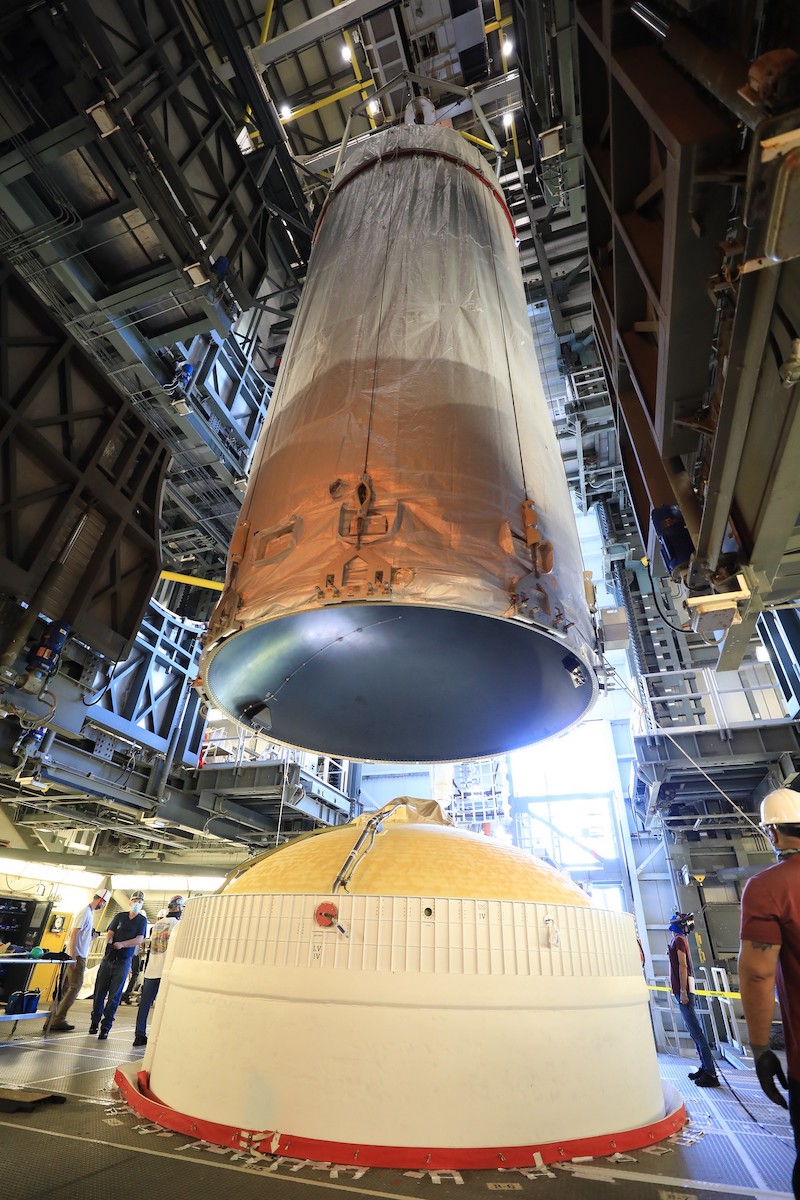
SpaceX’s Falcon Heavy rocket, which the Air Force certified for national security launches last year, can lift heavier cargo into space than ULA’s Delta 4-Heavy, and at a fraction of the cost. The Air Force in 2018 awarded SpaceX a $130 million contract for a Falcon Heavy launch, less than half the current price of a Delta 4-Heavy.
But the Delta 4-Heavy has a larger payload fairing than the Falcon Heavy, giving it more volume for the biggest NRO satellites. And ULA’s ground facilities allow satellites to be integrated vertically with their rockets.
The Vulcan Centaur will have the same vertical integration capability, and SpaceX plans to offer vertical integration and an extended fairing for its Falcon Heavy rocket in the future.
The Pentagon announced Aug. 7 that ULA and SpaceX will share launch duties for the most critical military and NRO satellites through 2027, with ULA receiving a 60 percent share of the launch contracts, and SpaceX getting 40 percent.
The Defense Department awarded sole-source contracts to ULA for the five remaining Delta 4-Heavy launches. All the missions are considered “Category C” payloads in the Pentagon’s parlance.
Future Category C missions will be tasked to ULA or SpaceX as part of the military’s new launch contract awards announced last week, and will not be sole-sourced, military officials have said.
With ULA and SpaceX planning new rockets or upgraded launch capabilities — all at less cost than the Delta 4-Heavy — the Pentagon will no longer need ULA’s older rocket configurations.
Tory Bruno, ULA’s president and CEO, said in a recent interview that the company has no plans to produce more Delta 4-Heavy launchers.
“It’s not really practical anymore,” Bruno told Spaceflight Now. “We’ve got the five left. Two of them will go this year, and we have allowed the supply chain that supports the Delta 4-Heavy to begin drying up after the pieces that are already delivered.”
After the Aug. 26 mission, ULA is planning to launch another Delta 4-Heavy rocket before the end of the year from Vandenberg Air Force Base in California. That launch, designated NROL-82, is expected to deliver a sharp-eyed surveillance satellite for the NRO.
Three more Delta 4-Heavy rockets are being built for launches in 2022 and 2023 — two from Cape Canaveral and one from Vandenberg.
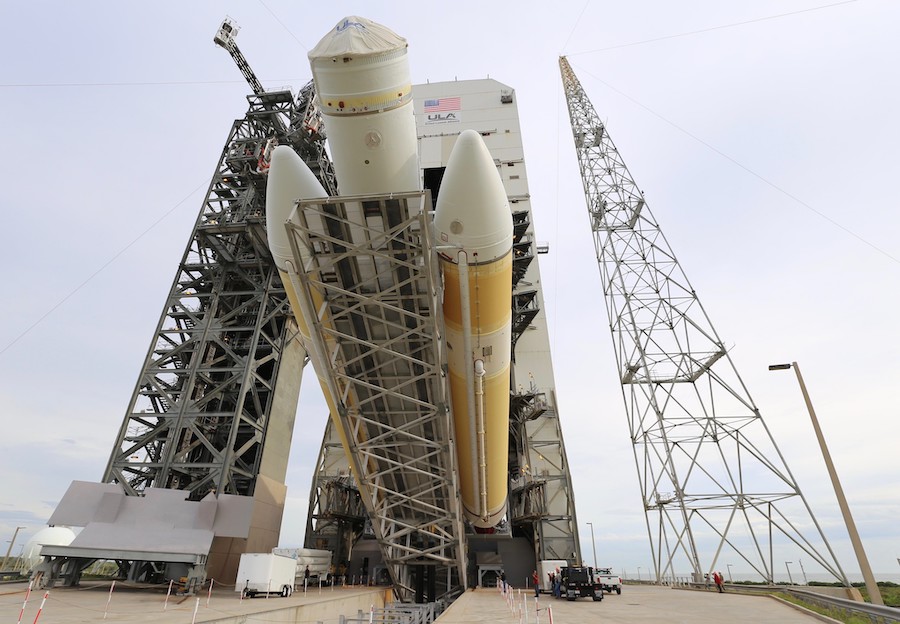
The Delta 4-Heavy rocket set for launch Aug. 26 was transferred to Cape Canaveral’s Complex 37B launch pad last November, where ULA crews erected the launcher’s three first stage boosters and second stage on top of the launch deck.
In January, the Delta launch team loaded the rocket with around 465,000 gallons (nearly 1.8 million liters) of cryogenic liquid hydrogen and liquid oxygen propellants during a countdown dress rehearsal. The launch team drained the rocket of propellants after the simulated countdown.
If the NROL-44 payload is similar to previous NRO spy satellites launched into similar geosynchronous orbits, the Delta 4-Heavy rocket will deliver its spacecraft passenger directly to a circular orbit some 22,300 miles in altitude, a lofty orbit that typically requires three firings by the Delta 4’s upper stage RL10 engine.
The Delta 4 launcher was originally designed and developed by Boeing in the 1990s. The Atlas 5 was developed by Lockheed Martin.
Boeing and Lockheed Martin merged their space launch divisions in 2006 to form ULA, a 50-50 joint venture between the two defense contractors.
Email the author.
Follow Stephen Clark on Twitter: @StephenClark1.

